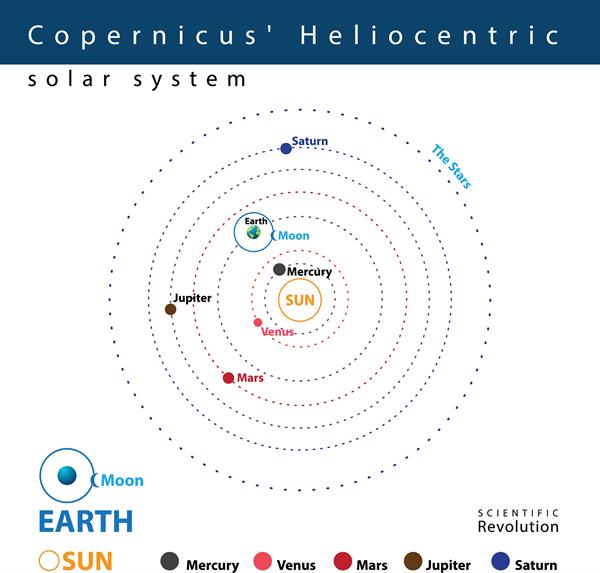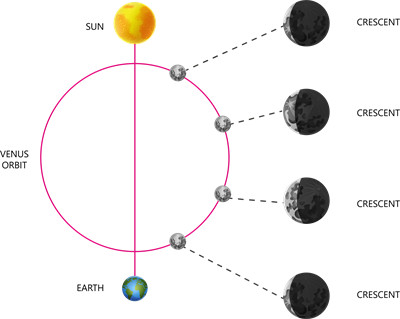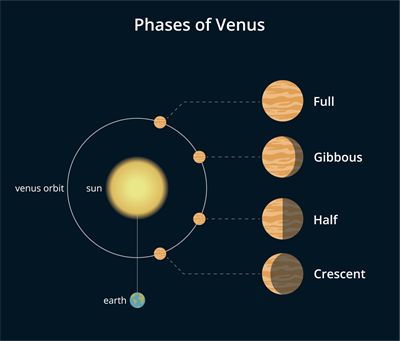PDF chapter test TRY NOW
Galileo used the telescope which was invented by Hans Lippershey to investigate the night sky. With the use of telescope, Galileo able to see and demonstrate the following which was not visible to the normal eye.
- Moon's Mountain
- Small Invisible dim stars
- Sunspots on the face of the sun.
- Milky Way is the group of more than thousand stars and looks like an hazy bright patch.
- Jupiter had moons which is orbiting around it
- Saturn had weird add on object which knows as rings
The important observation through telescope was about the Venus. This helps him to accept the theory invented by the famous polish astronomer Nicholas Copernicus.
Copernicus described that the earth is orbiting around the earth which is known as Heliocentric model.
Heliocentric model:
Copernicus was not satisfied with the Epicycle model and proposed the Heliocentric model which suggests that the model will become simple if we assume that the sun is at the centre and all the planets including earth are orbiting around it.
He explained all the observed facts for example, Mars and Earth take 687 days and 365 days respectively to revolve around the Sun and If they are on the other sides of the sun, Mars would be far from the sun compared to sun. If Mars and Earth are on the same side, Mars would appear dim compared to Earth. The retrograde motion would appear if earth approaching and overtaking Mars.

How do we confirm that Sun is centre of all planets or not?
In 1610 - 1611, The Heliocentric theory was recognised through the observation about the Venus by Galileo using telescope. Venus looks like a shimmering bright spot but through the telescope, shape of the Venus can be viewed. Galileo was shocked to find the Venus too exhibited phases similar to the Moon, and the shape and size of the Venus varied from crescent to gibbous. In gibbous, the size of the Venus was small and comparatively higher when it was in crescent.

The above diagram indicates as Venus went around epicycle, still exhibit phases and the possibility of varied size, shape and brightness. but it was clear to Galileo that the Epicycle Geocentric model will not be helpful for the observed phases of the Venus.

The above diagram indicates that Venus was revolving around the sun and its orbit was inside the Earth.
The following are the observations proved that at the least Venus orbited around the Sun:
- Venus always would appear near the Sun in the sky and never been seen in the midnight in the sky.
- It would look bigger and brighter near the Earth compared to the other side of the Sun.
- only if the Venus is orbiting around the Sun, it can exhibit gibbous phase, and the size of the gibbous phase smaller than the crescent phase. If the Venus was revolving around the Earth, we can never see the gibbous phase of the Venus and it would be seen only if it is orbiting the Sun.
Further evidences collected by astronomers using telescope and other advanced modern instruments gave enough evidence that all planets revolve around the Sun.
